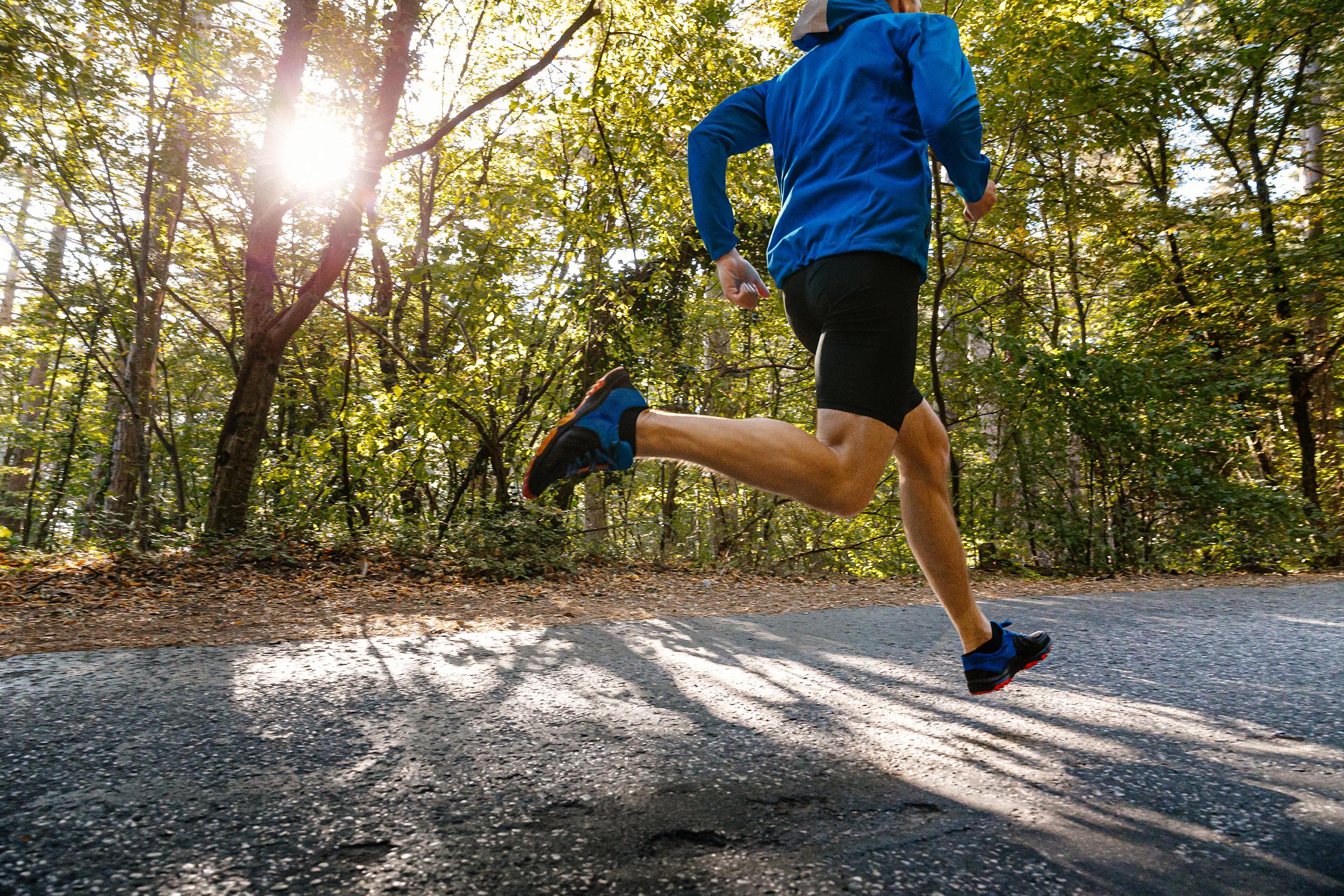
Ten tips for walking in the cold months
As the days get shorter and colder, it takes some discipline to keep running. But the real fanatics are of course not stopped by cold, wet or darkness. These ten tips will help you safely through the winter.
1. Choose the right clothes
It’s never too cold or too wet to run, if you dress appropriately for these weather conditions. Cotton clothing absorbs a lot of moisture, which makes you cold quickly. You better choose clothing made of synthetic fibers that wick away your perspiration. Wear several, thin layers on top of each other, so that an insulating layer of air is created. The outer layer should let sweat through, but keep out rain and wind. Be careful not to dress too thickly. Once you’re up to steam, you’ll warm up quickly.
You lose a lot of body heat through your head. Therefore, if it is very cold, wear a hat. You can also put on thin gloves if you get cold hands easily.
2. Stand out
Motorists in particular only see you at the last minute, especially if you are wearing black clothing. Make sure you are clearly visible in the dark. Wear lighting and clothing or a vest that reflects. There are bands with LED lights that you can wear around your arm or leg, but you can also use small bicycle lights. Also, stay alert for walkers and cyclists without lights who appear out of nowhere.
3. Take a smart route
Choose a trail that you know as your left pocket or walk a well-lit route so you don’t trip over an unexpected sidewalk or twist your ankle in an inconspicuous pothole. You can run several small rounds nearby instead of one large round. So you’ll be home quickly if the weather suddenly changes.
4. Watch the wind
Keep in mind that wind significantly lowers the perceived temperature. Walk against the wind on the way there, so that you have tailwind back. If you are sweaty, you cool down faster. If you still have to head home against the wind, that makes your walk extra difficult.
5. Turn down music
Do you enjoy running with an MP3 player? In the dark it is better to leave it at home or turn it down. Because you see less, you have your hearing urgently needed to notice fellow road users in time.
6. Walk Together
If you don’t feel comfortable alone in the dark, find a walking buddy. Or join a running group, athletics club or follow a series of clinics. That is immediately a good stick behind the door when the weather is bad and the comfortable sofa beckons.
7. Don’t slip
You can still walk fine on fresh snow, but on sleet or frozen snow you quickly slip away and then a injury incurred quickly. You can try to avoid slips by wearing shoes with extra profile, taking shorter strides and reducing your speed. If running outside is no longer possible, you can train on a treadmill or keep your fitness up with swimming or another indoor sport.
8. Don’t put shoes near the heater
It is better not to dry your shoes with the heating, that is bad for the material. If they have become very wet, you can put a wad of (newspaper) paper in them and replace them a few times if necessary, so that they dry faster. It is also useful to have a second pair of running shoes: if one pair is still damp, you can put on the other.
9. Don’t run with a fever
If the symptoms occur above the neck (cold nose, earache, sore throat), it is best to go for a quiet run.
Are you suffering from flu, fever or symptoms lower than the neck (shortness of breath, cough, muscle aches), you should not walk. Walking slows your recovery and can cause you to overtrain. Only when you have fully recovered can you resume running. Rest for two days before each day of illness.
10. Set a Goal
Walking in the sun may be more motivating than having to leave the house in the dark. Register in advance for a running race in the winter or spring, then you have to keep training in order to appear fit at the start.
Sources):















